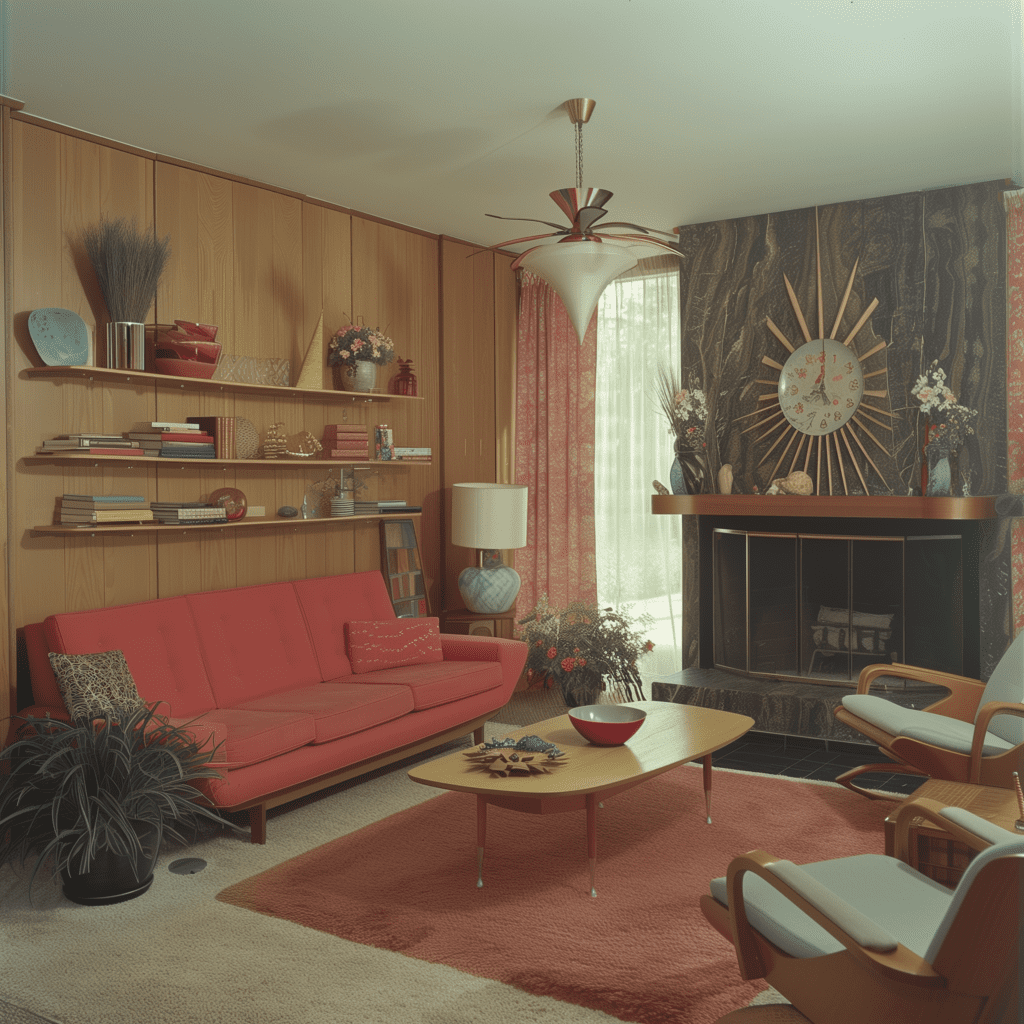Exploring the Charm of 1950s Living Rooms
The 1950s marked a significant era in interior design, reflecting the post-war optimism and suburban boom. The living room, being the heart of the home, showcased the era’s distinct style and functional innovations.
1950s Living Room Design and Decor
The 1950s living room interior design was characterized by a blend of comfort and style. Middle-class families often embraced a practical yet aesthetically pleasing approach. Typical 1950s living rooms featured bold colors, including vibrant hues like red, yellow, and green, often used in living room decor to bring a lively atmosphere.
Furniture and Layout

1950s living room furniture included sleek, modern designs with clean lines. Popular pieces were often made of wood or vinyl, featuring mid-century modern aesthetics. Living room 1950s house interiors typically boasted sofas with low profiles, wooden coffee tables, and minimalist storage solutions. Chairs in 1950s living rooms were functional and stylish, adding to the overall decor without overwhelming the space.
The layout of a 1950s living room was designed for family gatherings and entertainment. Common features included a central coffee table surrounded by seating, with a focus on a fireplace or a television. Curtains and wallpaper often matched or complemented the furniture, creating a cohesive look.
Cost of Living and Suburban Expansion
The cost of living in the 1950s was relatively low, allowing many families to invest in suburban homes. The suburban living boom was partly explained by the affordability of housing and the desire for a better quality of life. This shift led to the popularity of suburban living in the 1950s, as reflected in the typical 1950s living room decor.
Influences and Trends
Living rooms in the 1950s were influenced by various factors, including the American dream of suburban life. Magazines and advertisements of the time often showcased the ideal 1950s living room, complete with modern furniture and stylish decor. This era also saw the rise of frugal living tips, as families sought to balance style with budget-friendly solutions.
Variations in Style
The 1950s also saw variations in living room styles, such as the ranch living room fireplace on a long wall with furniture arranged to maximize space. Other styles included the Hollywood teal living room decor and the southern home interior living room, each reflecting regional preferences and cultural influences.
Cultural and Social Context
Living in the 1950s was marked by a focus on family and community. As a result of suburban living, many middle-class women in the 1950s found themselves managing households and participating in community activities. The standard of living 1950s was defined by comfort and practicality, with an emphasis on creating inviting and functional living spaces.
Comparison with Other Eras
When comparing 1950s living rooms with those of the 1930s, the main difference was the shift towards more modern and streamlined designs. The 1950s favored simplicity and functionality, while the 1930s often featured more ornate and heavy furniture.
Preservation and Nostalgia
Today, the 1950s living room style continues to inspire modern interior design. Vintage living rooms, with their nostalgic charm and practical elegance, are often recreated in contemporary homes. The popularity of mid-century modern design has kept the 1950s aesthetic alive, with many enthusiasts seeking to capture the essence of this iconic era.
Conclusion
The 1950s living room encapsulated the spirit of an era marked by optimism, innovation, and a desire for comfort. From the middle-class living room 1950s interior to the more luxurious mid-century 1950s living room, the decade’s design principles continue to influence modern interiors. Whether it’s through furniture, decor, or overall layout, the legacy of 1950s living rooms remains a testament to the timeless appeal of mid-century modern design.






Leave a Comment